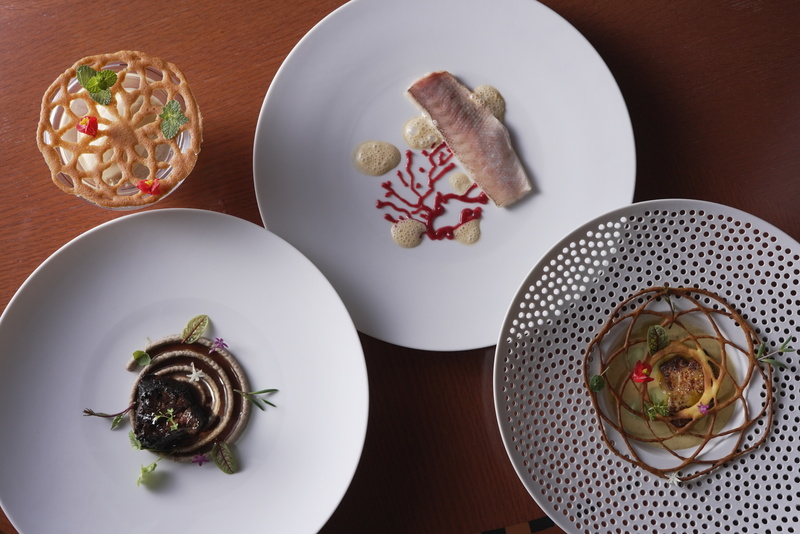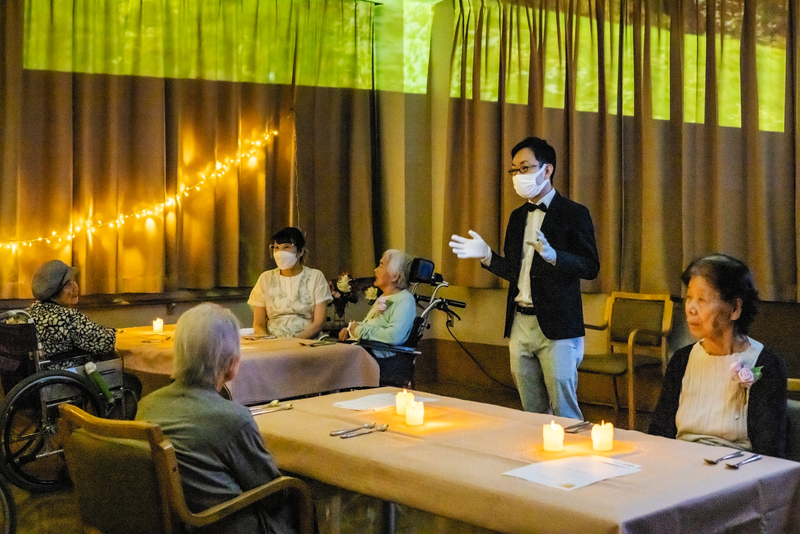Interviews

Interviewer & Japanese Writer: Yamamoto Takaya; Translation & Editing: Matthew Cherry
Kouhei Yamaguchi was selected for the 2021 INNO-vation Program’s Disruptive Challenge for his vision of bringing full-course French cuisine into nursing homes using a 3D food printer. Although his ultimate goal was a full course, he decided to first link up with a 3D food printer engineer and a chef to try their hands at making desserts and soups.
3D food printers apply pressure to ingredients to create layers of food. If the inserted ingredients are too soft, the desired shape will become crushed before it’s finished printing. Printing also takes around 5 to 10 minutes to complete, which can lead to the discoloration of some of the ingredients.
“I tried using a kiwi, but the finished product had a washed-out color which didn’t look appetizing at all. Furthermore, I tried making more sophisticated ingredients like scallops to be used in soups, but feeding multiple people at the same time it’s impossible to accomplish with only one printer. Only through trying things out did I learn what problems would arise,” Yamaguchi said, reflecting on the beginning of his challenge.
With these experiences under his belt, Yamaguchi decided to let the 3D food printer work on making accents and garnishes for food while a chef worked on the main portions of the dish. He was able to enlist some help from an old friend of his that worked as a chef. His friend had been providing French cuisine to people with various feeding disabilities over the previous five years and possessed a lot of knowledge on the subject. For example, he noted that meat should be cooked long enough that it can be broken down by only the movements of the tongue and jaw. By using this method, a full-course French meal including appetizers, fish, meat, and dessert was crafted. The 3D food printer finished off the dishes with garnish.

Various dishes garnished with 3D-printed food.
The completed meal was provided to nursing homes, and the critics were in. “I think there were people there who had never tried French cuisine before, but even still it was well-received by everyone. The environment was also a bit different from your typical restaurant, so I think they were all able to enjoy a sophisticated yet extraordinarily unique experience while dining,” Yamaguchi said.

A trial tasting was held at a nursing home.
Even with all of the success, there were still a few problems remaining. The cuisine relied largely on the skill of a professional chef, and 3D food printers weren’t able to feed a lot of people at the same time. The fact that not many chefs possess the skills required to provide food for those with feeding disabilities also had to be considered. “Japan is an aging society, yet there’s a shortage of restaurants with chefs that can cater specifically to the elderly. This means that Japan simply isn’t doing enough to respond to the culinary needs of its aging population,” Yamaguchi mentioned. With this in mind, he set his sights on his next initiative.
In Part 3, we’ll take a look at Yamaguchi’s work after the INNO-vation Program.
Continued in Part 3 (Coming March 27th, 2023)

